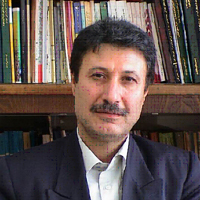Housing Planning for Urban Low-income Groups with an emphasis on Their Financial Capabilities, Housing Line of Poverty in Kurdistan Province urban population
Housing as one of the stellar biological needs of men has allocated a major theoretical, technological, and materialistic concern of mankind. During history, providing this need and its quality has been dependant on cultural, environmental, historical, economical, and technological conditions. World population and urban life's intense increase which has passed above 50 % and expecting to be more than 68 % by 2050 has caused the challenging question of housing into a crisis. This problem is of greater importance in developing countries due to the fact that their societies are mainly constituted by low-Income (middle-class) people. In Sanandaj in addition to the situation we see in the national level regarding housing sector that is due to population growth and intense urban life growth, another factors like general level of income has caused unavailability of house especially among weak people- less wealthy- who are about 35%. In housing market, there are a lot of related economical indices such as family saving, cost and income, profitability rate of land and housing market, land and house price and productivity of housing production factors which play role. This study tries to probe into principal economical reasons of increased gap between offer and demand in housing sector in Sanandaj.
The study is an applied one conducted through a descriptive-analytic method. Analyses are done by usual models and methods. To collect data, we use library-based and field method and its needed data has been gathered through formal sources like Iran Census Center and Iran Central Bank.
Housing quantitative changes has been considered for studying housing market and influential economical condition of this sector. Based on the obtained results, the gap between housing offer and effective demand is increased since 1355 so that the ratio of a family to a house lessened from 1.0015 in 1355 to 1.15 in 1385. Furthermore, house shortage rate in Sanandaj in comparison with the number of families- without considering demolition rate- is 10760 units.Land and house price, and lease cost are significant indices for analyzing housing offer and demand market. Annual growth of a 1m3 land in the abovementioned period of time (1355-1385) is 31.15% while lease cost growth is 25%.By comparing house and land cost rate growth and inflation growth rate, one can perceive the importance of house in economical transactions which also leads to brokerage growth. During this period of time, land, house, and lease cost growth rate have been always more than inflation rate (17.4). At the same time, Sanandaji families' income growth rate in this period has increased to 16.6 which can be interpreted as a huge gap between potential and effective demand considering a 28% growth in land price and a 31% growth in housing price. Family saving as a main source of house provision with a fixed price of (1380= 100), has been always negative except in four years; whereas, banks loans and facilities, on the average, in the last ten years has decreased to 10.6% from 67% in 1381.The average of bank loans and facilities for any case has accelerated from 81 million Rials in 1381 to 192.6 million Rials in 1390. The other main index is the economical profitability of land market in comparison with the profitability rate of house construction market in which we have witnessed an annual growth in both of them. However, at the end of the period, the profitability rate of house construction market is 5 times more than the land one. The productivity rate of house provision factors have been studied based on the interpretation of the factors. Therefore, the productivity rate of capital with a fixed rate has been positive. The growth rate of added value of housing sector in this period, on the average, has been 30.25; that is, for any Rial investment, there is a 30.25 Rial added value. Also, the productivity rate of land that was 1.017 units in 1381, has reached 2.55units in 1390 that is a remarkable growth. The productivity rate of work force is reached 22.9 in1386 that was 5.2 in 1380. In other words, any work force has provided 22.9 million Rials added value in housing sector. Its average annual growth during this period has been 34.5.Results and
Results of the study demonstrate that housing has not been a problem by 1355. However, at the end of the period, 1385, we have encountered, first, a problem called houselessness and house-badness specifically in obliterated fabrics in Sanandaj, and second, a house shortage which is 15% of its inventory. Based on the obtained results from housing economical indices and its financial provision mechanism, accentuation on family savings for its financial provision seems fruitless. Also, continuous growth in house price considering its remarkable added value, one can come to this conclusion that by omitting and decreasing land price, the cost of house construction will be transmitted to the other sources and methods of house financial provision such as bank facilities growth to 80% for house purchase and construction, deposit loans, tax exemption, and activating financial sources of the private sector. And we can also pace towards social housing provision methods, rent on the condition of owning and eventual construction
Inflation , Costs , income portfolios , Profitability Rate , productivity , Offer , Demand
- حق عضویت دریافتی صرف حمایت از نشریات عضو و نگهداری، تکمیل و توسعه مگیران میشود.
- پرداخت حق اشتراک و دانلود مقالات اجازه بازنشر آن در سایر رسانههای چاپی و دیجیتال را به کاربر نمیدهد.



